Frigidaire 36 in. W 21.7 cu. ft. 4-Door French Door Refrigerator in Smudge-Proof Stainless Steel, Counter Depth
Switch from refrigerator to freezer with Custom-Flex Temp Drawer. Adjustable storage with flip-up shelf and expandable door bin. Crispers keep produce fresher longer with auto moisture removal.
The Frigidaire 4-Door French Door refrigerator offers the Custom-Flex Temp Drawer, which fully switches from fridge to freezer, and offers the widest range in temperature settings (-6 to 45 degrees) on the market. CrispSeal crispers help keep fruits and vegetables fresh longer, and it’s easy to organize and clean with SpaceWise organization system and Smudge-Proof stainless steel.
- Custom-Flex Temp Drawer can be set from -6° to 45°
- SpaceWise organization system including a flip-up shelf to fit taller items and an expandable door bin
- OpenAccess Door allows you to reach up to 75% of your fresh food by opening just one door
- Auto CrispSeal Crisper Drawers keeps your produce fresh
- TwinTech cooling system keeps food fresh by maintaining consistent temperatures in both the refrigerator and freezer
- PureSource Ultra II ice and water filtration remove 99.3% of lead and 99.9% of cysts from your household water
- PureAir Ultra II air filter keeps food in your refrigerator fresh by removing odor particles with fast-acting, highly absorbent carbon technology
- Extra tall ice and water pocket so you can easily fill tall pitchers and sports bottles with a 10 inch exterior ice and water pocket
- Quick freeze option lets you quickly freeze foods so they stay at their freshest–set this option before a large grocery run so your food freezes faster once you get home
- ENERGY STAR Certified for maximum energy savings
- Star-K Certified Sabbath Mode
Additional information
| Depth (Excluding Handles) | 29.625 |
|---|---|
| Depth (Including Handles) | 30.02 |
| Depth (Less Door) | 29.625 |
| Depth With Door Open 90 Degrees (In) | 46.875 |
| Height to Top of Door Hinge (in.) | 70 |
| Height to Top of Refrigerator (in.) | 70.125 |
| Product Depth x Height x Width (in.) | 32.06 x 70 x 36 |
| Refrigerator Width (In.) | 36 |
| Certifications and Listings | CSA Certified,CSA Listed,ETL Listed,Energy Star,Star-K |
| Manufacturer Warranty | 1 year parts and labor |

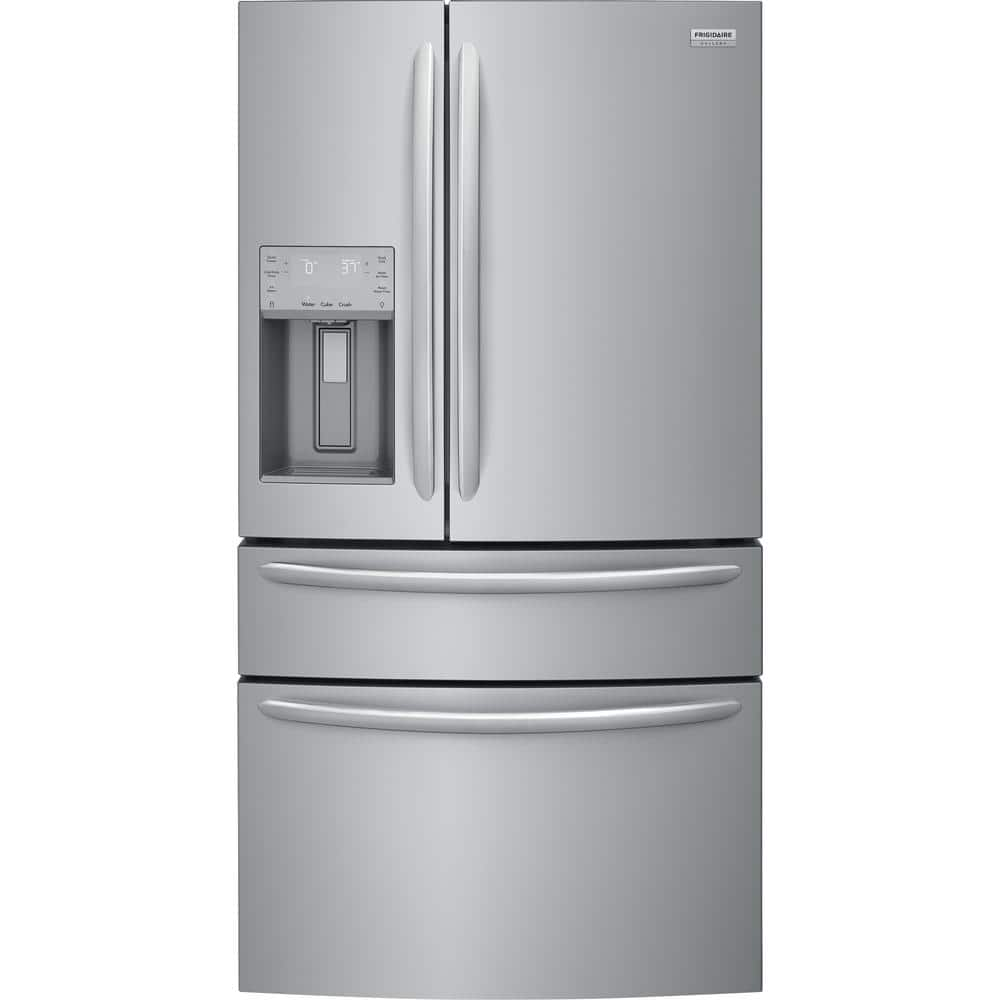
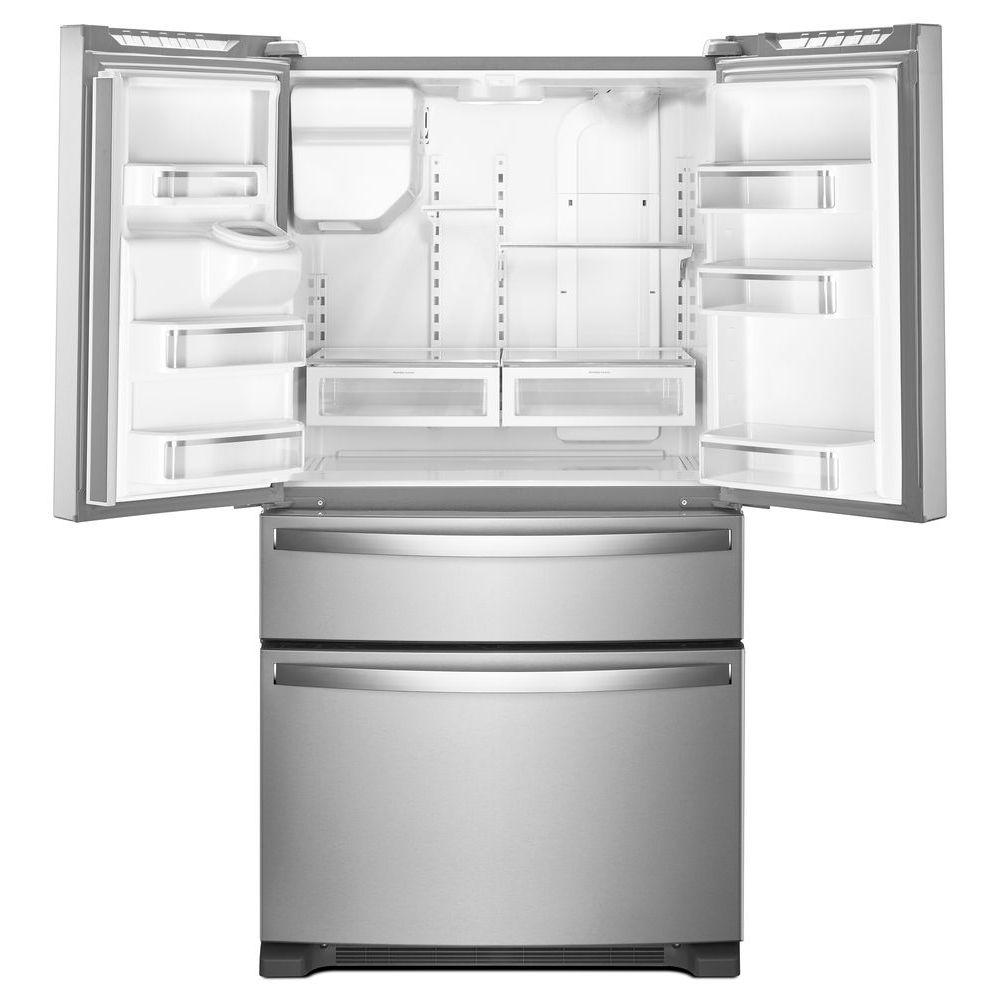
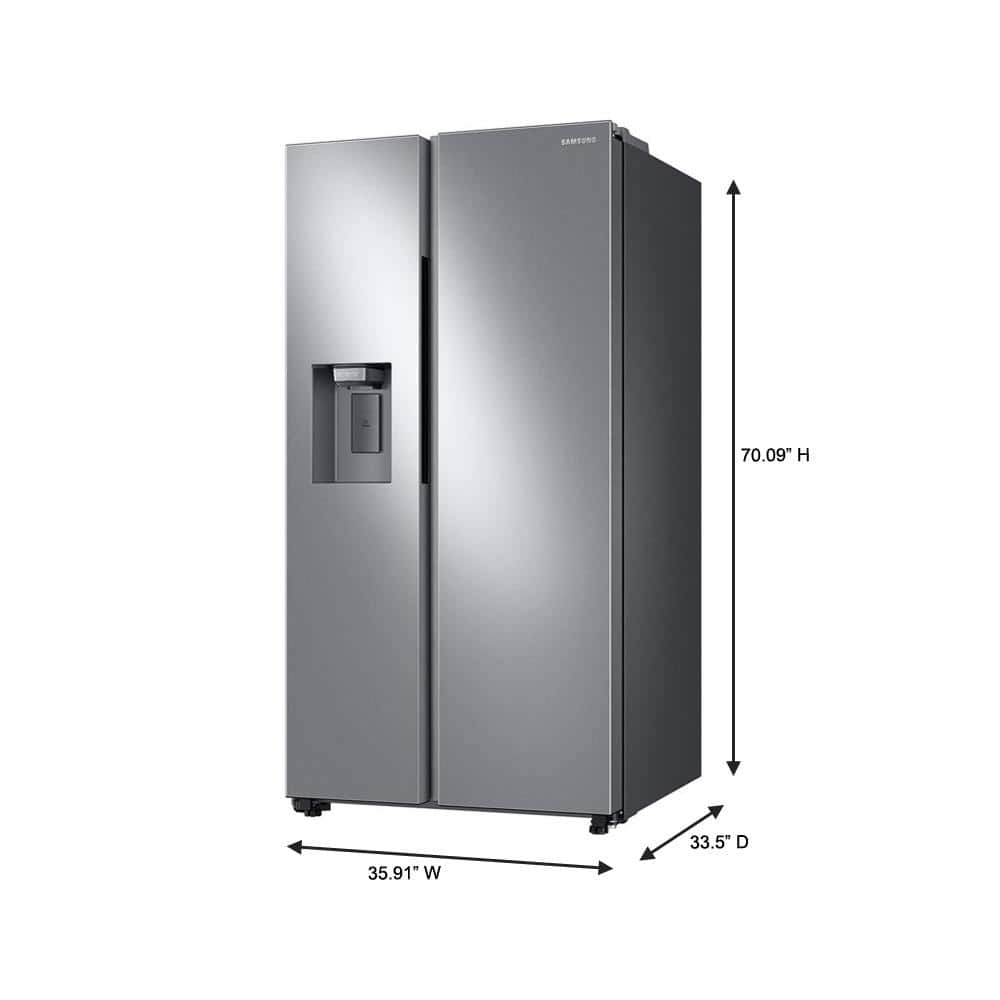
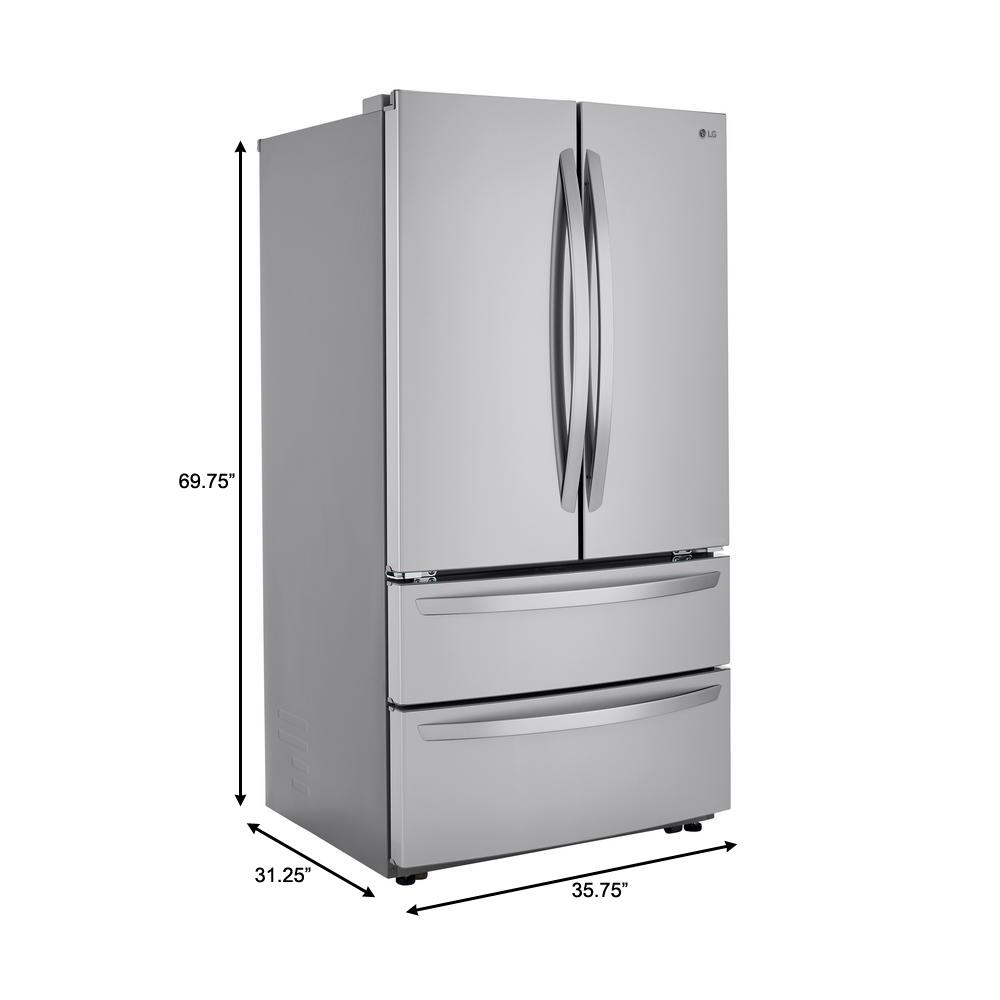
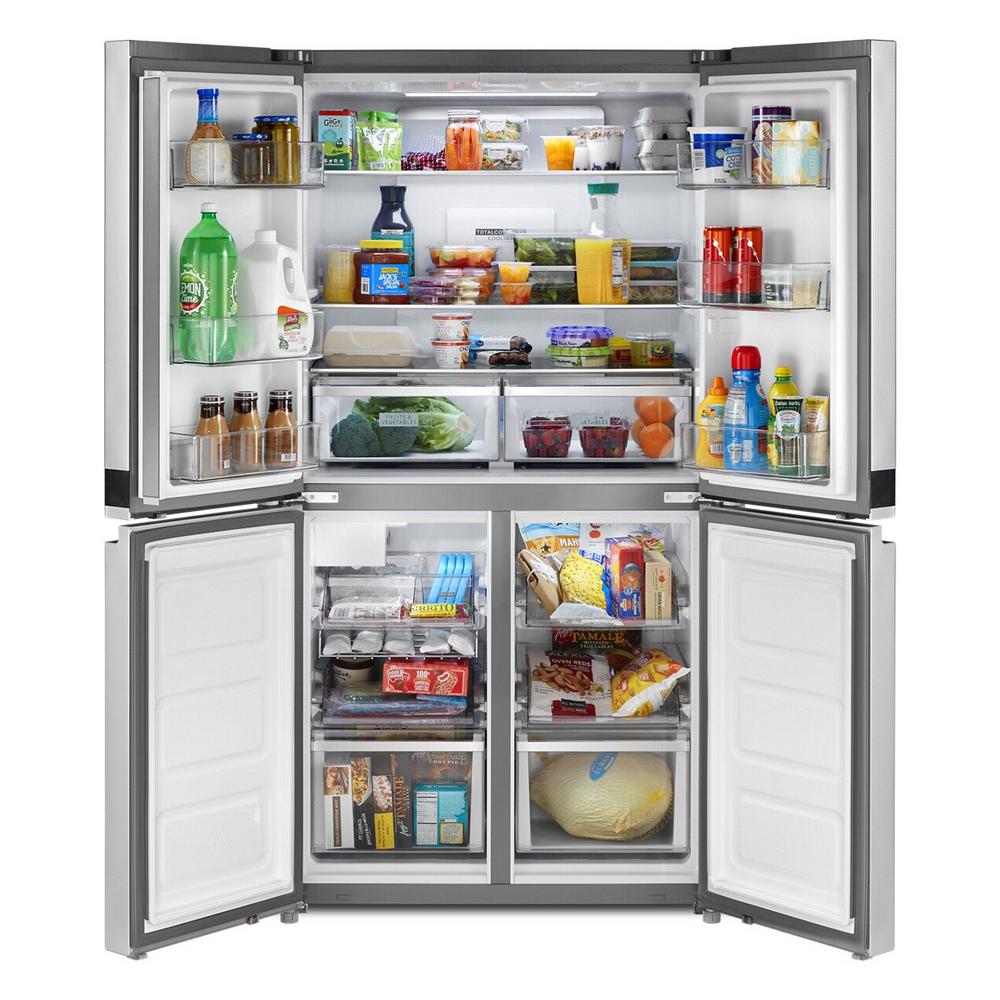
by Janet
I love that I don’t have to pile things and search for what I am looking for in this refrigerator and freezer.
by Laurie
We love this fridge for its spacious and thoughtful design. We especially love the middle drawer that can be used as either a fridge or freezer drawer. We love that drawer dividers can slide to make more room. This is the only counter depth fridge that we saw that wasn’t tiny and cramped. The only con is the finicky ice maker which can run out of ice before the end of the day and take hours to make more…or get stuck on “crushed” and then get jammed when crushed ice and cubes meld together at the opening.
by Jeff
It took some getting used to with the smaller size due to being counter-depth. Overall, pleased with the refrigerator. Design flaw: drawer behind left-hand, smaller door won’t open completely due to hitting the larger, right-hand door.
by Arty
We are very pleased with our new refrigerator! The only problem we have is not the fault of the refrigerator, but the general size of all new appliances such as this one. The current appliances are all a bit larger and therefore it is difficult for homeowners to find one that still fits in their “older” kitchens. We are not in the position to remodel or remove walls, etc. just so we can open the fridge doors! This fridge is wonderful and we are very happy with it, but we are limited in how far we can open the doors and we did extensive research into the sizes of new refrigerators and this one was the closest in size to what we could fit in our kitchen. Everything works great so far and we LOVE the middle drawer for quick grabs without opening all the doors!
by Paddle
My wife really likes the overall layout and features like the optional frig / freezer drawer.
by John
We had just returned from a vacation and our old refrigerator failed. Immediately we started searching for a new one. After much research and reading reviews we decided to buy one of your units through a local store. The big box stores had many weeks of waiting for a possible delivery. The store we purchased it from delivered it the next day! We have nothing but the highest praise for the appearance, design, and quality of the unit. We highly recommend this unit. We had a earlier unit from your company that lasted many years.